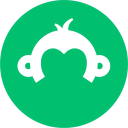How I Conquered My Alcoholism And Built A Non-Alcoholic Beverage Brand
Note: This business is no longer running. It was started in 2017 and ended in 2024. Reason for closure: Shut down.
Hello! Who are you and what business did you start?
Hello! My name is Aaron Weast and I started Drink Shrub, a company dedicated to offering a sophisticated zero-proof solution to an age old problem: what to drink when you’re not drinking.
Our flagship product is Small Barrel Shrub, an all-natural “zero-proof” (non-alcoholic) balsamic beverage. Early in our business we identified as a “mocktail in a bottle” but we feel zero-proof honors the complexity of a beverage and the situations in which our consumers enjoy the product. Our shrub is offered in four flavors: Cascadia Raspberry, Orange & Vanilla, Coconut, and Lemongrass & Mint.
We started the company as a side hustle and for the first two years worked nights & weekends to grow our business. Only recently did we begin working on it full-time. Our first product rolled off the production line in September of 2017, with approximately 18,000 bottles.
After selling the product at farmer’s markets, local retail outlets, food shows, etc. we aggregated the feedback from our customers and revised the recipe and branding in May of 2018. This new revision became what is known today as Small Barrel Shrub. Armed with this new...

Download the report and join our email newsletter packed with business ideas and money-making opportunities, backed by real-life case studies.

Download the report and join our email newsletter packed with business ideas and money-making opportunities, backed by real-life case studies.

Download the report and join our email newsletter packed with business ideas and money-making opportunities, backed by real-life case studies.

Download the report and join our email newsletter packed with business ideas and money-making opportunities, backed by real-life case studies.

Download the report and join our email newsletter packed with business ideas and money-making opportunities, backed by real-life case studies.

Download the report and join our email newsletter packed with business ideas and money-making opportunities, backed by real-life case studies.

Download the report and join our email newsletter packed with business ideas and money-making opportunities, backed by real-life case studies.

Download the report and join our email newsletter packed with business ideas and money-making opportunities, backed by real-life case studies.












































